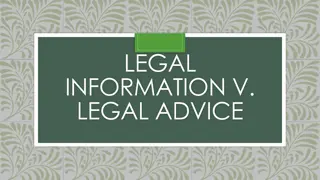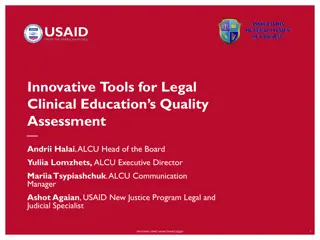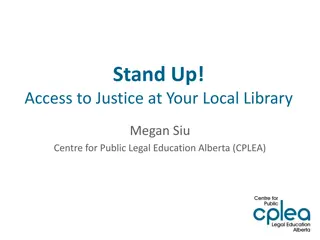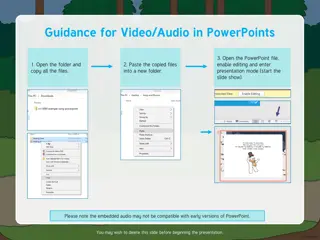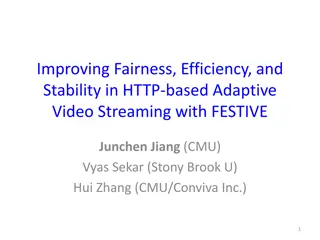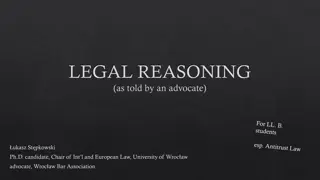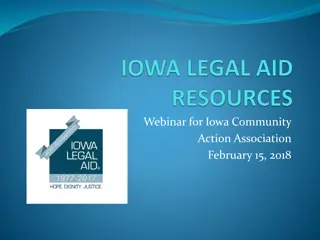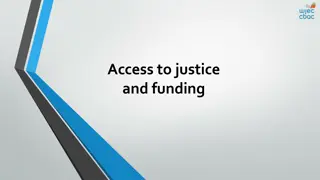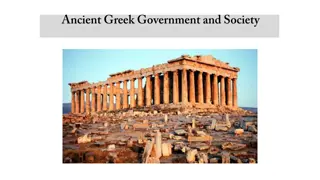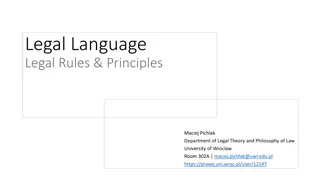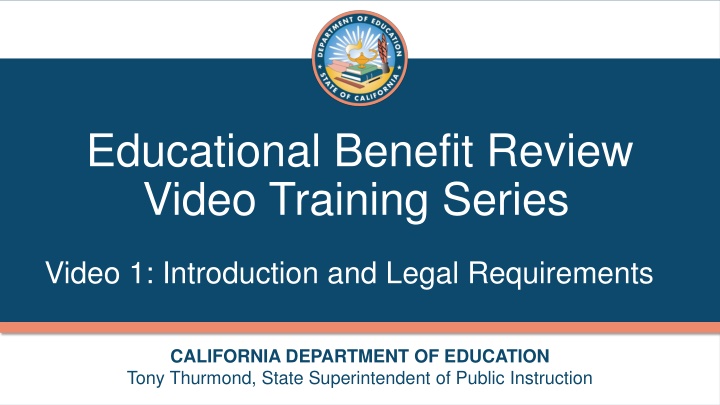
Educational Benefit Review Training Series for California Department of Education
Explore the Educational Benefit Review Video Training Series by California Department of Education featuring essential legal requirements, including FAPE and LRE guidelines, as well as key statutes and regulations for children with disabilities. Gain insights into the Individuals with Disabilities Education Act (IDEA) and the provision of Free Appropriate Public Education (FAPE) to children aged 3-21.
Download Presentation

Please find below an Image/Link to download the presentation.
The content on the website is provided AS IS for your information and personal use only. It may not be sold, licensed, or shared on other websites without obtaining consent from the author. If you encounter any issues during the download, it is possible that the publisher has removed the file from their server.
You are allowed to download the files provided on this website for personal or commercial use, subject to the condition that they are used lawfully. All files are the property of their respective owners.
The content on the website is provided AS IS for your information and personal use only. It may not be sold, licensed, or shared on other websites without obtaining consent from the author.
E N D
Presentation Transcript
Educational Benefit Review Video Training Series Video 1: Introduction and Legal Requirements CALIFORNIA DEPARTMENT OF EDUCATION Tony Thurmond, State Superintendent of Public Instruction
Table of Acronyms Code of Federal Regulation (CFR) Educational Benefit Review (EBR) Free Appropriate Public Education (FAPE) Individualized Education Program (IEP) Individuals with Disabilities Education Act (IDEA) Least Restrictive Environment (LRE) Local Educational Agency (LEA) United States Code (USC)
Outcomes Participants will: Be provided an overview of the EBR training video series. Be provided an overview of how FAPE and the LRE are guiding our monitoring and technical assistance processes, and what role EBR plays in this work. Gain a better understanding of the statutes and regulations, concerning FAPE for an EBR.
Educational Benefit Review Training Series Video 1 - EBR Introduction and Legal Requirements Video 2 EBR Getting Started Video 3 Conducting the EBR, Year 1 to Year 2 Video 4 Conducting the EBR Year 3/current IEP and Compliance Determinations Video 5 Summary of Files, Trends, & Submission
Free and Appropriate Public Education Individuals with Disabilities Education Act: The United States Congress Finds: Disability is a natural part of the human experience and in no way diminishes the right of individuals to participate in or contribute to society. Improving educational results for children with disabilities is an essential element of our national policy of ensuring equality of opportunity, full participation, independent living, and economic self-sufficiency for individuals with disabilities. 20 USC 1412 Free Appropriate Public Education (From IDEA) FAPE is available to all children with disabilities residing in the State between the ages of 3 and 21, inclusive, including children with disabilities who have been suspended or expelled from school.
Statutes and Regulations 34 CFR 300.101 (a) FAPE must be available to all children residing in the State between the ages of 3 and 21, inclusive, including children with disabilities who have been suspended or expelled from school. (c)(1) Each State must ensure that FAPE is available to any individual child with a disability who needs special education and related services, even though the child has not failed or been retained in a course or grade and is advancing from grade to grade. California Education Code 56040 (a) Every individual with exceptional needs who is eligible to receive special education instruction and related services under this part, shall receive that instruction and those services at no cost to his or her parents or, as appropriate, to him or her. FAPE shall be available to individuals with exceptional needs.
Legal Support In Endrew F. v. Douglas County School DistrictRE-1, 137 S. Ct. 988, 999 (2017), the Supreme Court stated that a school must offer an educational program that is reasonably calculated to enable a child to make progress appropriate in light of the child s circumstances. That standard has two key parts: Reasonably calculated; and progress that is appropriate in light of the child s circumstances.
Why do an Educational Benefit Review? Refine and improve LEA practices Provide training to staff Identify strengths and weaknesses Improve student outcomes
Educational Benefit Review The EBR process guides school teams through the examination and comparison of specific components of the IEP to determine if the IEP is reasonably calculated to enable a child to make progress appropriate in light of the child's circumstances. Specifically, the EBR reexamines present levels of performance, goals, placement, services and progress. Student selection involves reviewing three consecutive years of a student s IEPs, ideally starting with a review of the year in which an initial or triennial IEP was completed, and then include two subsequent years of IEP information. The process to review these IEPs allows district teams the opportunity to investigate their district s practices to identify areas of strength and any gaps that need to be addressed.
Educational Benefit Review Guides school teams through the examination and comparison of specific components of the IEP to determine if the IEP is reasonably calculated to enable the child to make progress and receive educational benefit. Involves reviewing three consecutive years of a student s IEPs and must include the current operative IEP. May start with a review of the year in which an initial or triennial IEP was completed, and then include two subsequent years of IEP information.
Educational Benefit Typically, for a student with disabilities primarily in the general education classroom, an IEP reasonably calculated to result in educational benefit may be measured (in part) by: Achieving passing marks Advancing from grade to grade Appropriate progress toward meeting IEP goals Improving scores on clinical, district, and statewide assessments Graduating with a diploma Educational benefit must be considered on a case-by-case basis.
Educational Benefit Review Training Series Video 1 - EBR Introduction and Legal Requirements Video 2 EBR Getting Started Video 3 Conducting the EBR, Year 1 to Year 2 Video 4 Conducting the EBR Year 3/current IEP and Compliance Determinations Video 5 Summary of Files, Trends, & Submission


